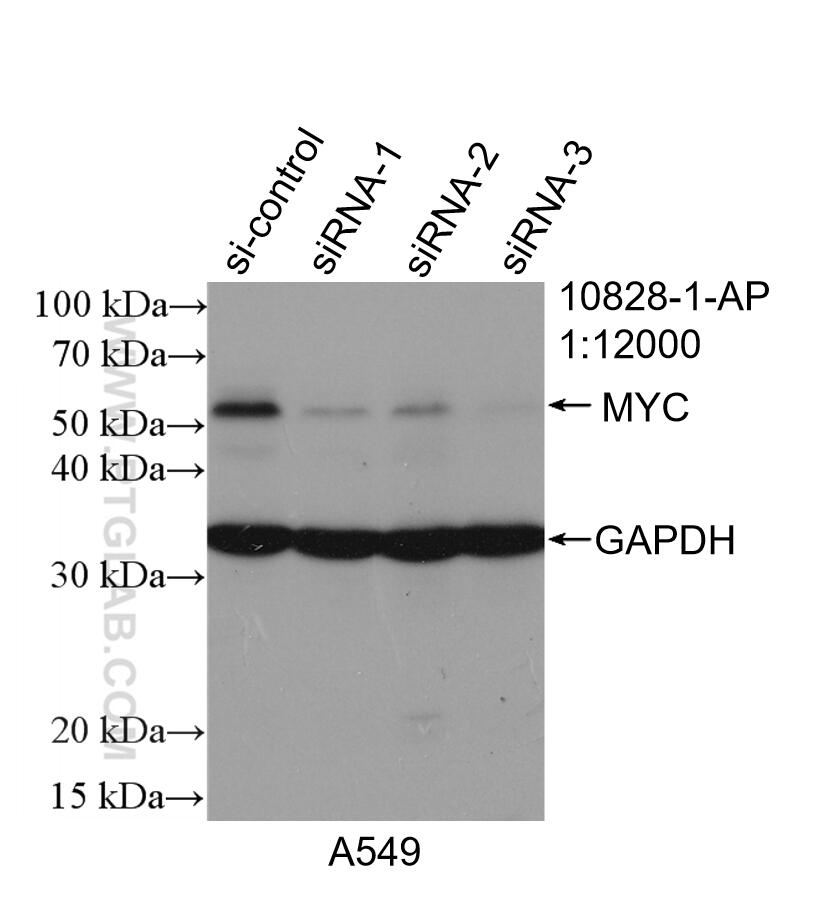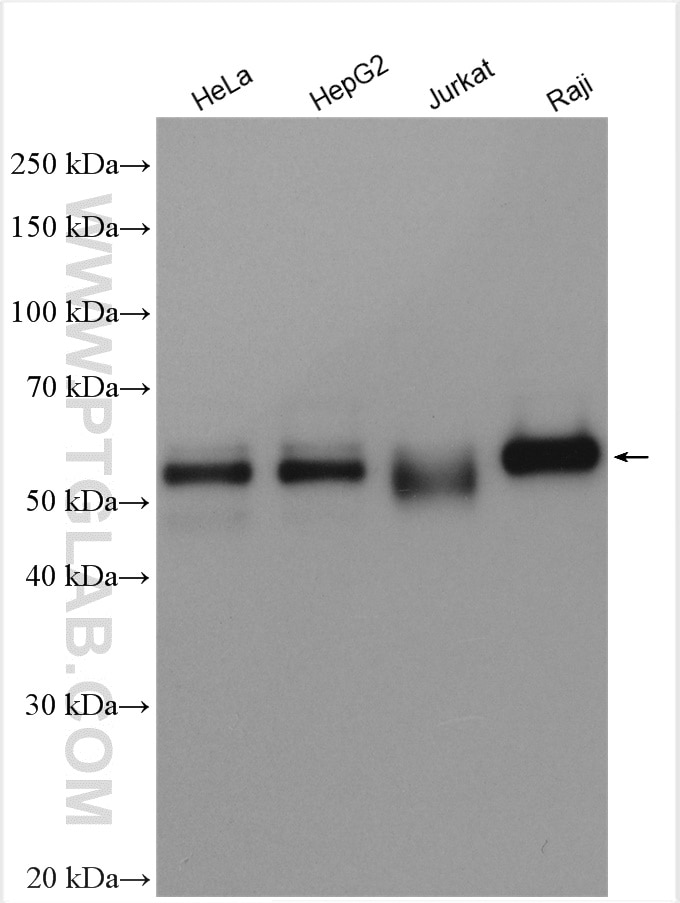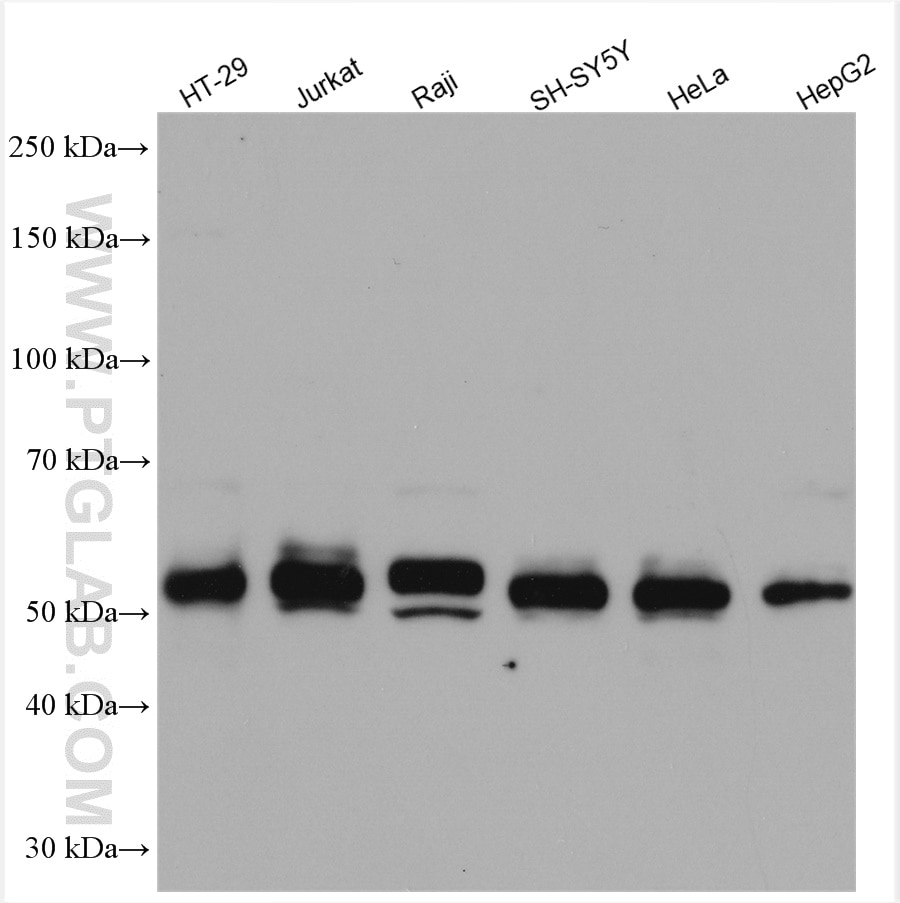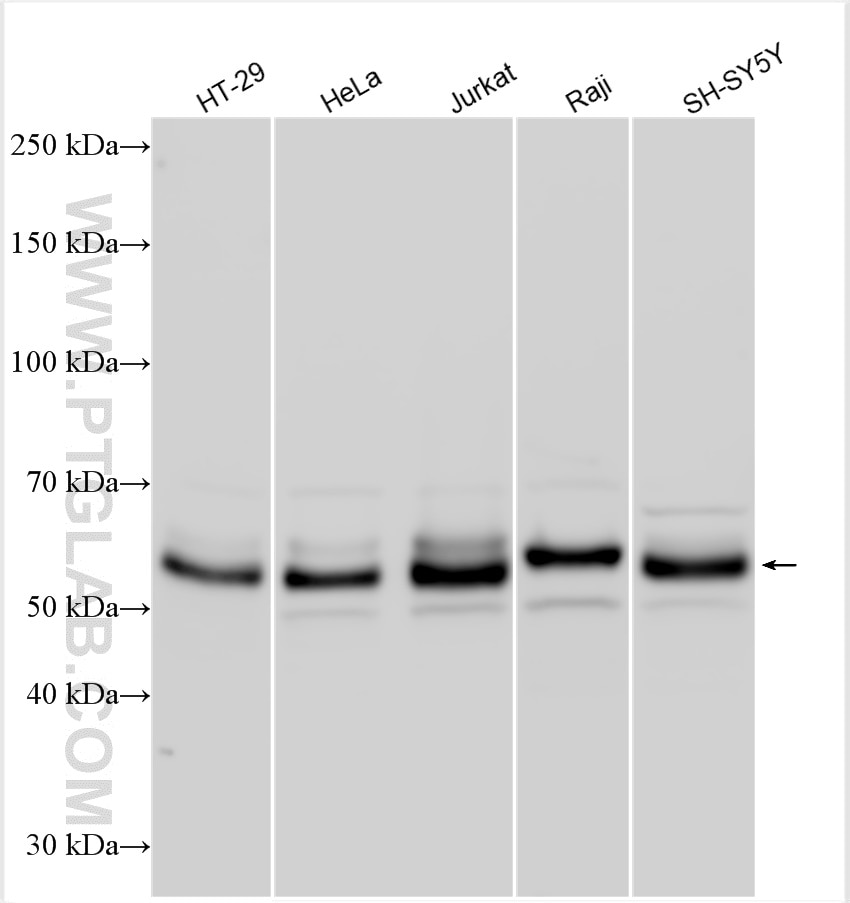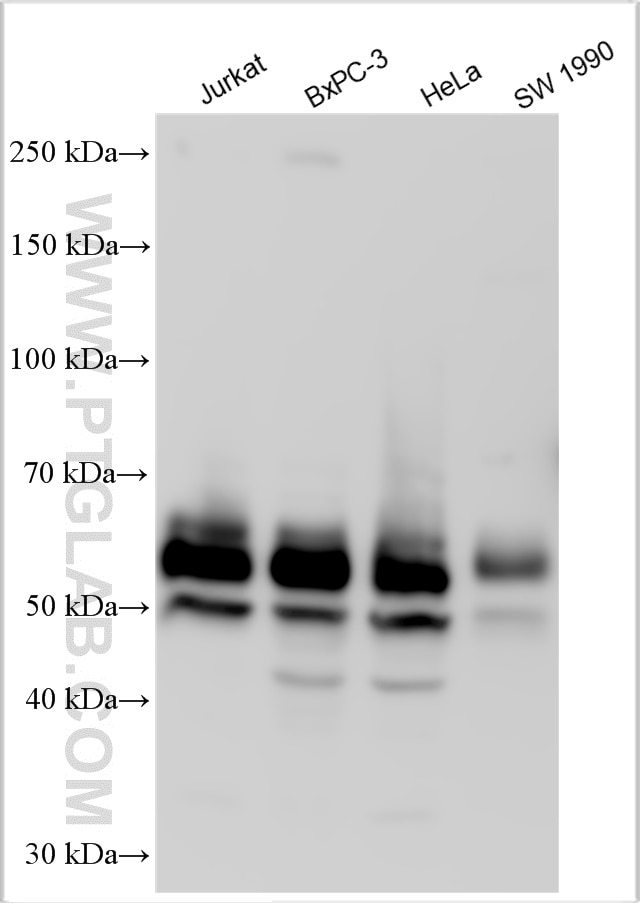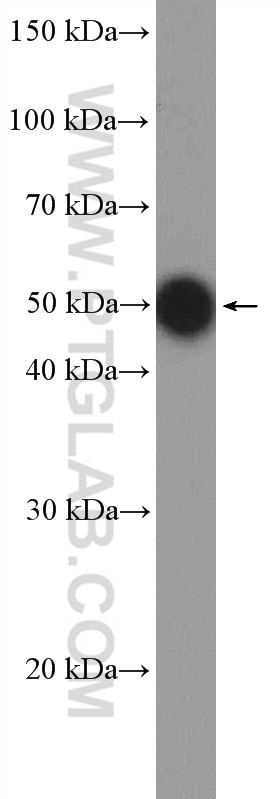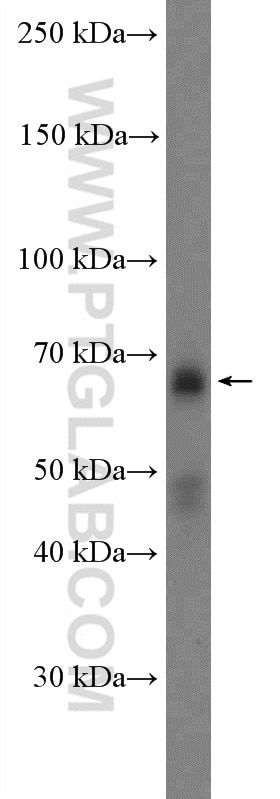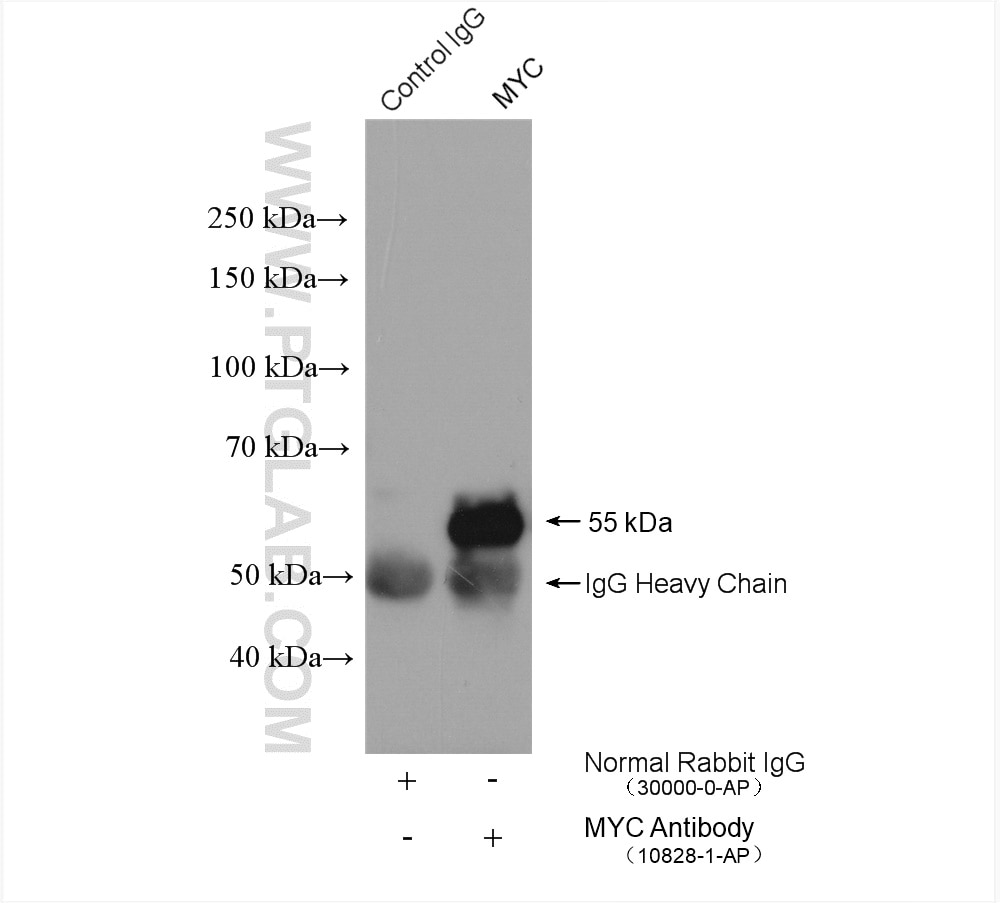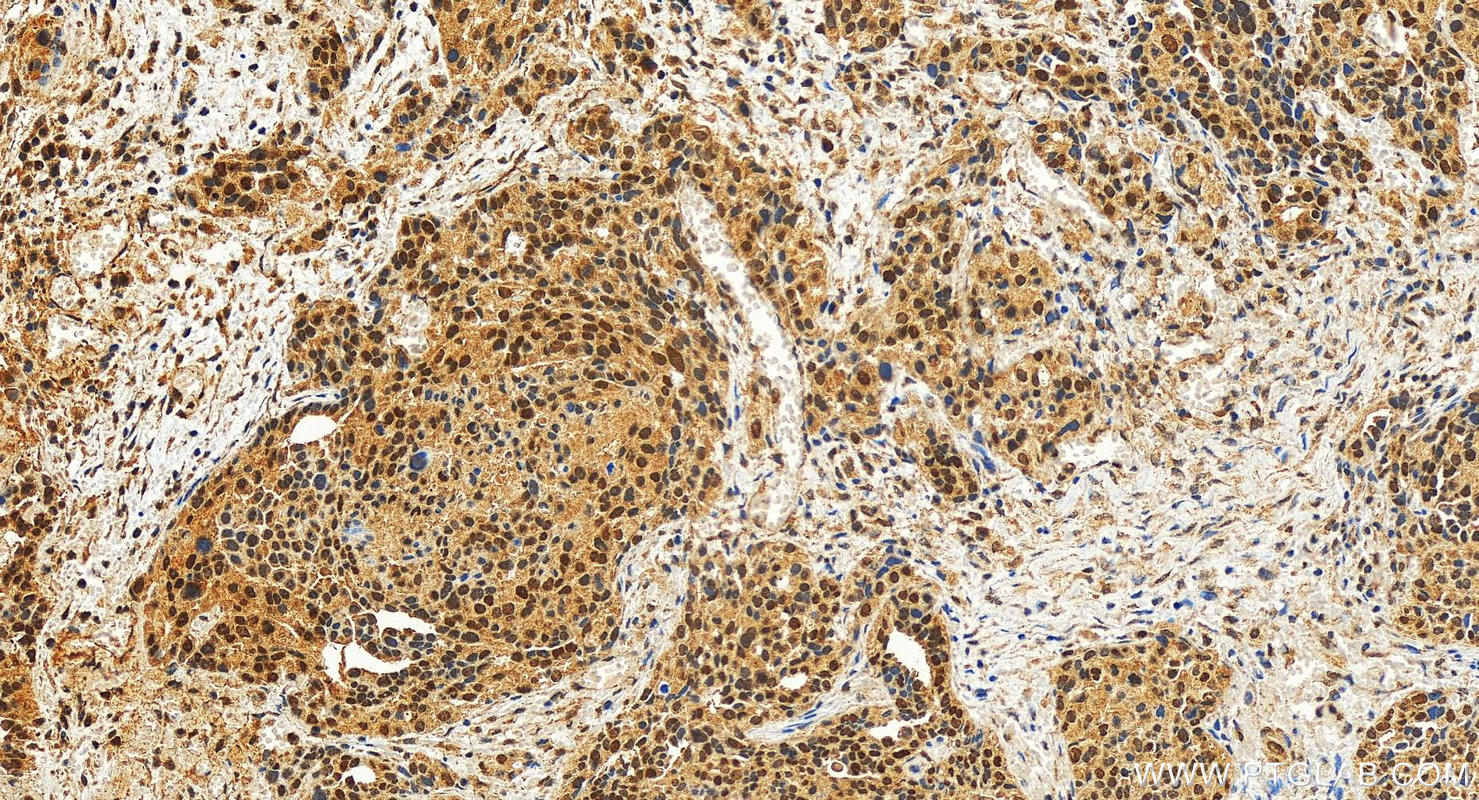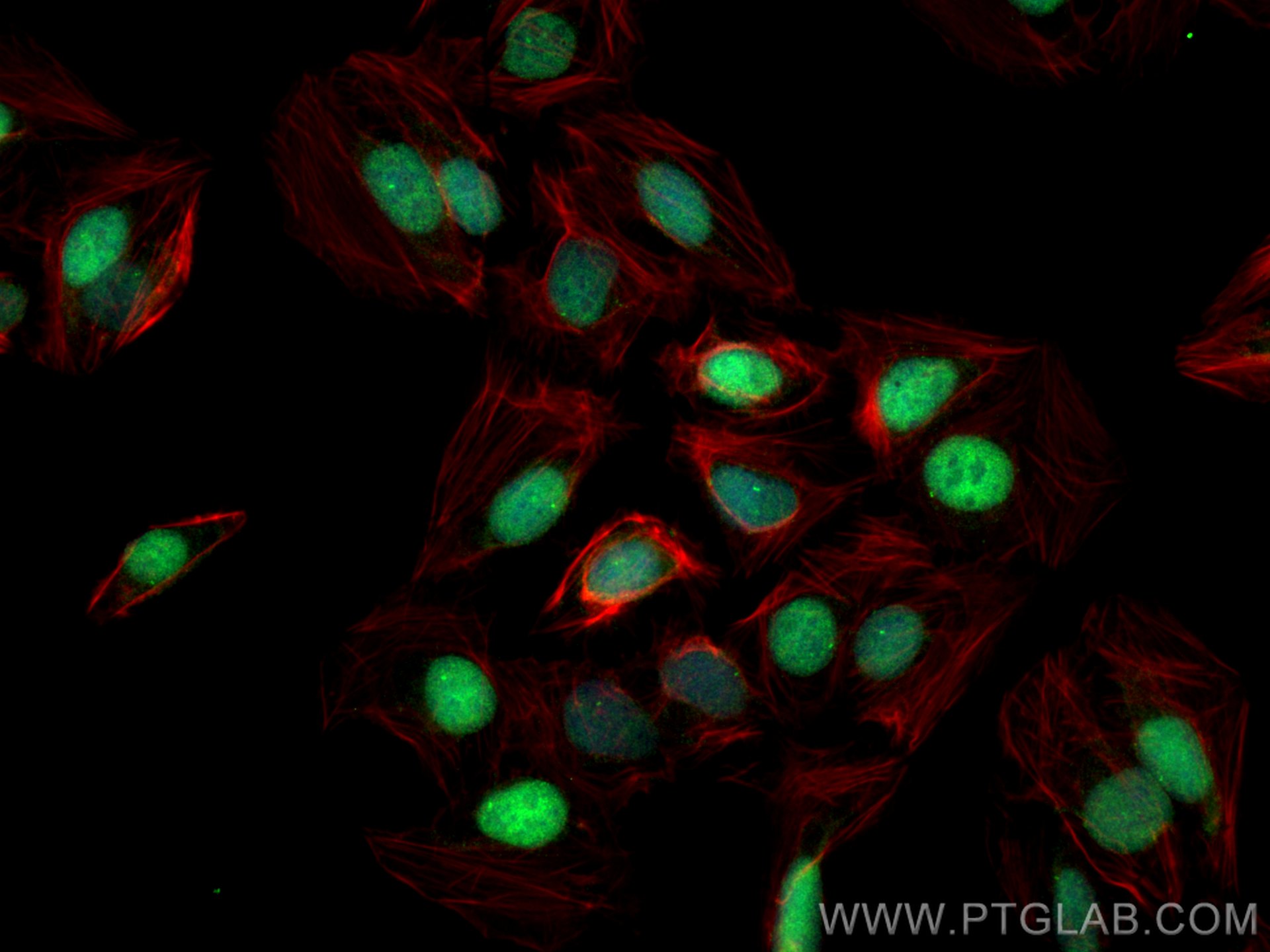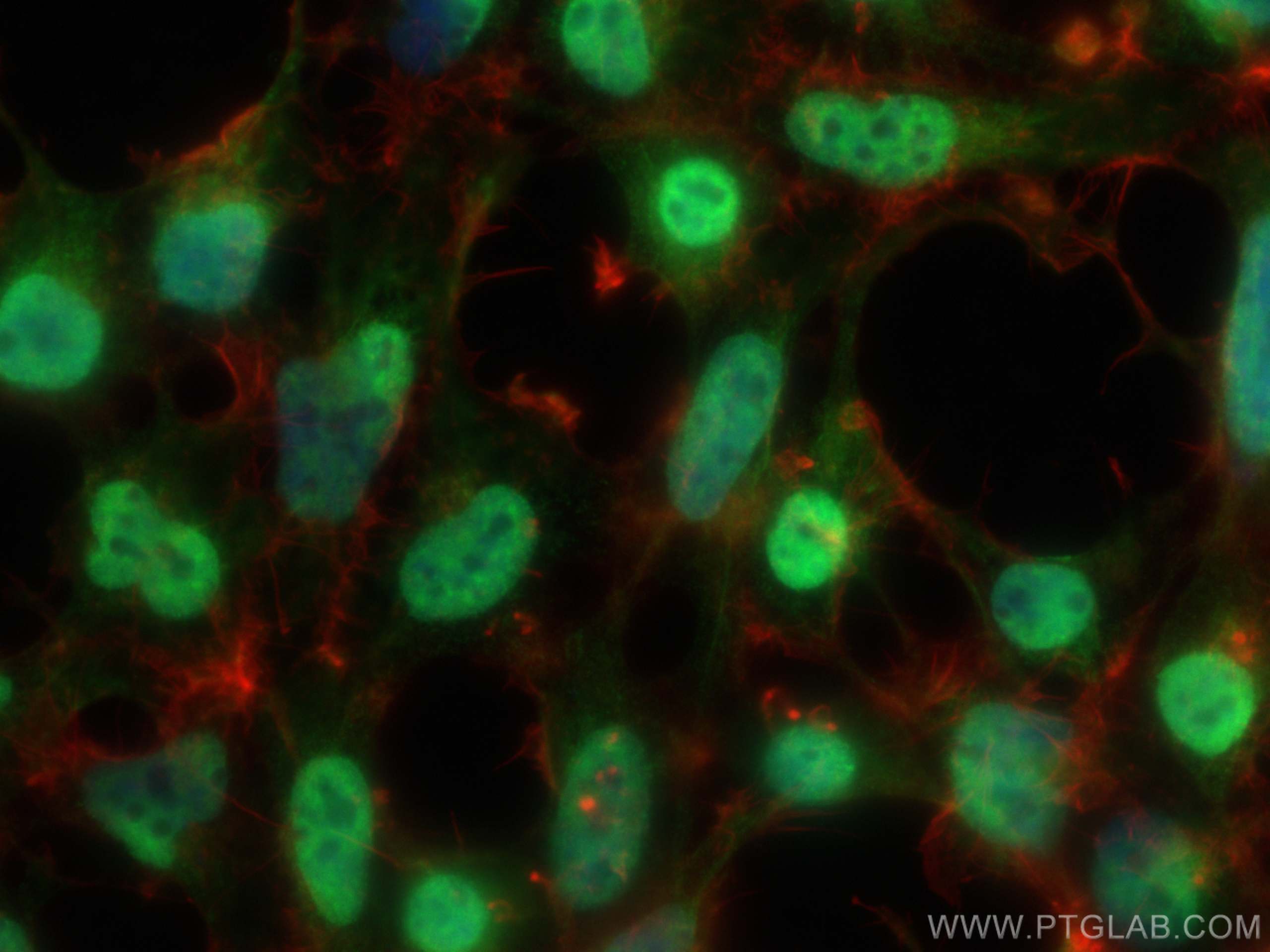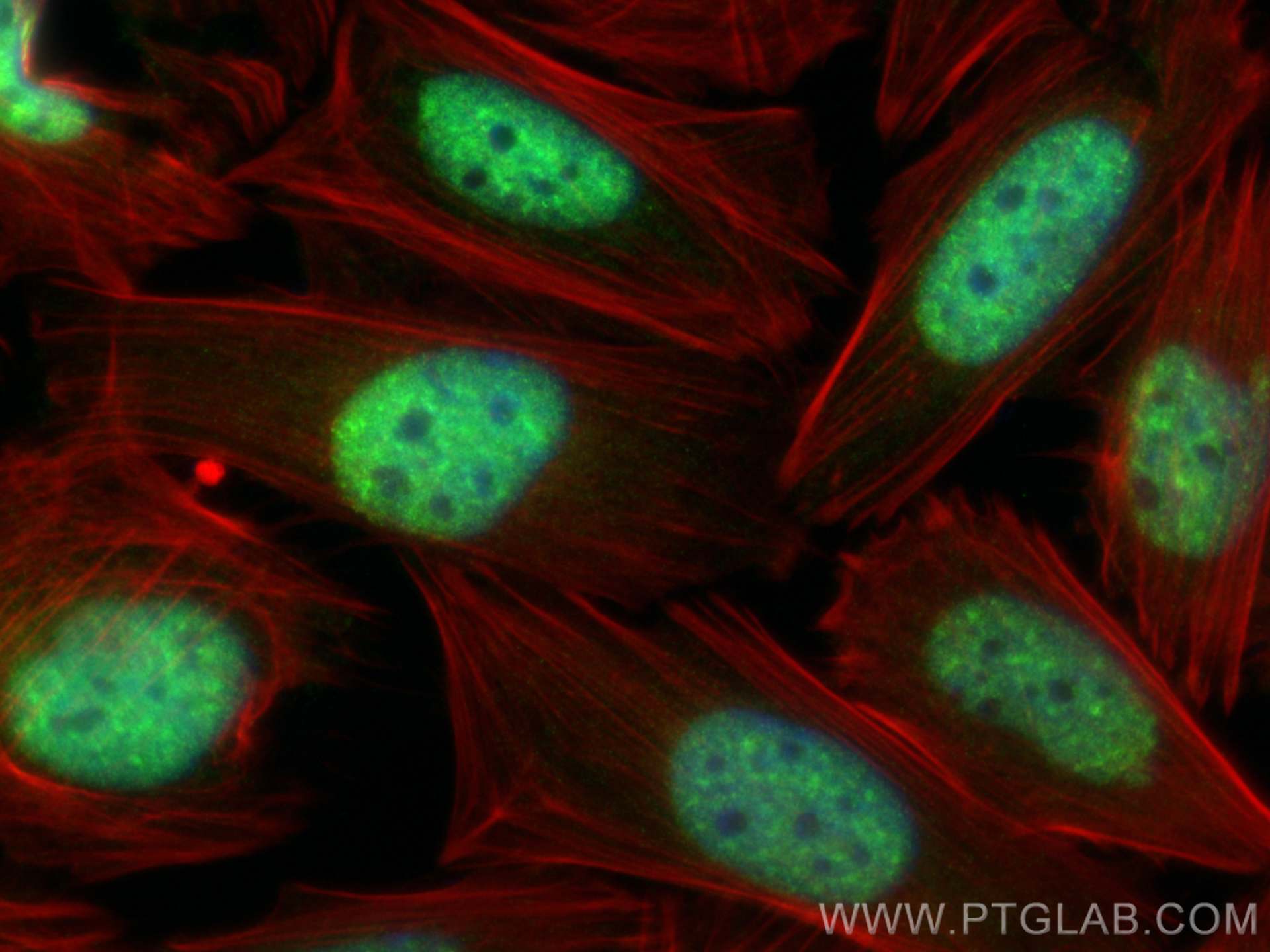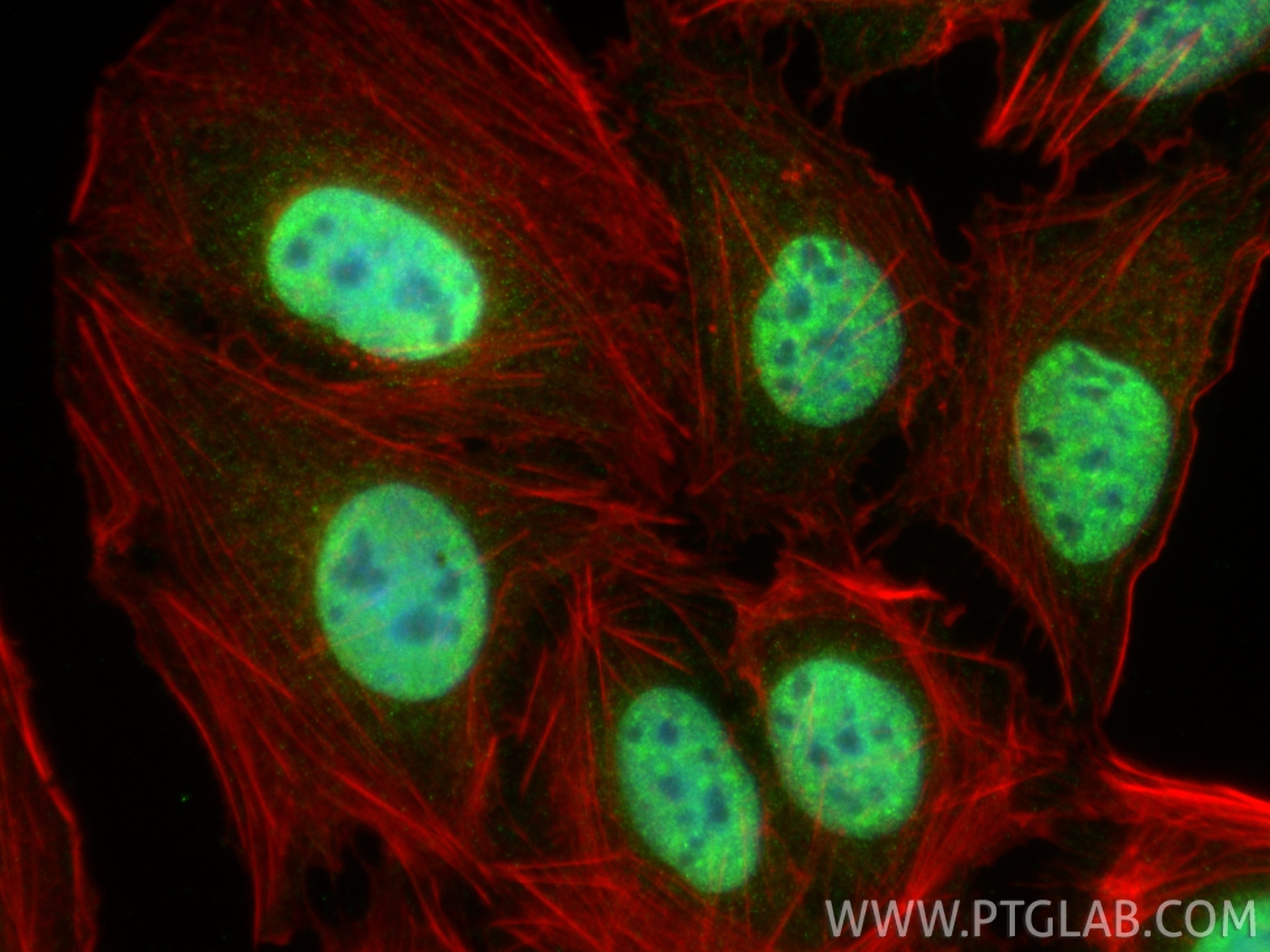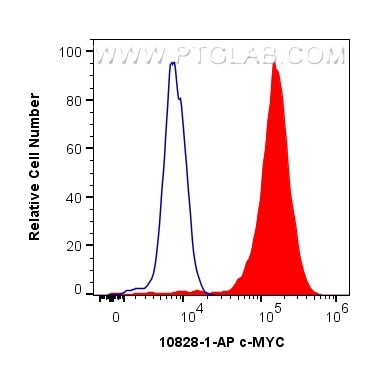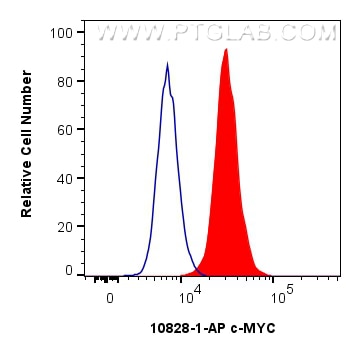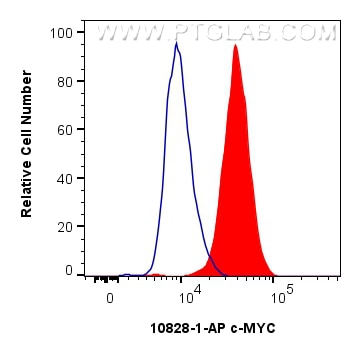- Phare
- Validé par KD/KO
Anticorps Polyclonal de lapin anti-c-MYC
c-MYC Polyclonal Antibody for WB, IF/ICC, FC (Intra), IP, ELISA
Hôte / Isotype
Lapin / IgG
Réactivité testée
Humain et plus (5)
Applications
WB, IF/ICC, FC (Intra), IP, CoIP, chIP, RIP, ELISA, EMSA
Conjugaison
Non conjugué
N° de cat : 10828-1-AP
Synonymes
Galerie de données de validation
Applications testées
| Résultats positifs en WB | cellules HT-29, cellules A549, cellules BxPC-3, cellules HeLa, cellules HepG2, cellules HL-60, cellules Jurkat, cellules Jurkat et cellules Raji, cellules Raji, cellules SH-SY5Y, cellules SW-1990, tissu placentaire humain |
| Résultats positifs en IP | cellules MCF-7, |
| Résultats positifs en IHC | human ovary cancer tissue, il est suggéré de démasquer l'antigène avec un tampon de TE buffer pH 9.0; (*) À défaut, 'le démasquage de l'antigène peut être 'effectué avec un tampon citrate pH 6,0. |
| Résultats positifs en IF/ICC | cellules U2OS, cellules HEK-293 |
| Résultats positifs en FC (Intra) | cellules HeLa, cellules NCCIT |
Dilution recommandée
| Application | Dilution |
|---|---|
| Western Blot (WB) | WB : 1:2000-1:12000 |
| Immunoprécipitation (IP) | IP : 0.5-4.0 ug for 1.0-3.0 mg of total protein lysate |
| Immunohistochimie (IHC) | IHC : 1:500-1:2000 |
| Immunofluorescence (IF)/ICC | IF/ICC : 1:200-1:800 |
| Flow Cytometry (FC) (INTRA) | FC (INTRA) : 0.40 ug per 10^6 cells in a 100 µl suspension |
| It is recommended that this reagent should be titrated in each testing system to obtain optimal results. | |
| Sample-dependent, check data in validation data gallery | |
Informations sur le produit
10828-1-AP cible c-MYC dans les applications de WB, IF/ICC, FC (Intra), IP, CoIP, chIP, RIP, ELISA, EMSA et montre une réactivité avec des échantillons Humain
| Réactivité | Humain |
| Réactivité citée | rat, Humain, porc, poulet, souris, Ver à soie |
| Hôte / Isotype | Lapin / IgG |
| Clonalité | Polyclonal |
| Type | Anticorps |
| Immunogène | c-MYC Protéine recombinante Ag1263 |
| Nom complet | v-myc myelocytomatosis viral oncogene homolog (avian) |
| Masse moléculaire calculée | 49 kDa |
| Poids moléculaire observé | 62-65 kDa, 50 kDa |
| Numéro d’acquisition GenBank | BC000141 |
| Symbole du gène | MYC |
| Identification du gène (NCBI) | 4609 |
| Conjugaison | Non conjugué |
| Forme | Liquide |
| Méthode de purification | Purification par affinité contre l'antigène |
| Tampon de stockage | PBS with 0.02% sodium azide and 50% glycerol |
| Conditions de stockage | Stocker à -20°C. Stable pendant un an après l'expédition. L'aliquotage n'est pas nécessaire pour le stockage à -20oC Les 20ul contiennent 0,1% de BSA. |
Informations générales
Function
c-Myc (also known as Myc), together with l-Myc and n-Myc, belongs to the Myc family of transcription factors. c-Myc has a basic helix-loop-helix leucine zipper domain and through heterodimerization can bind and regulate the transcriptional activity of genes, either by repression or activation. It is a key player in the regulation of cell growth and cell cycle progression and acts as a proto-oncogene.
Tissue specificity
c-Myc is ubiquitously expressed in almost all cell types and its expression positively correlates with tissue proliferative capacity. c-Myc is also expressed during embryogenesis and is upregulated in many cancer types.
Involvement in disease
· Upregulated in many cancer types, especially in aggressive, poorly differentiated tumors.
· Mutations in the MYC gene and breakpoint translocations within the MYC gene cause Burkitt lymphoma.
Isoforms
There are 3 different isoforms of c-Myc: c-Myc1, c-Myc2, and c-MycS (PMID: 16260605). They differ in molecular size, can be preferentially expressed during cell growth, and are reported to be functionally distinct. The 50kDa band recognized by antibody is the native form of MYC, while the other bands, between 60-70kDa, are the phosphorylated form of MYC (PMID: 12189186).
Post-translational modifications
c-Myc is subject to various post-translational modifications, including phosphorylation, acetylation, and ubiquitinylation (PMID: 16987807), which regulate its activity.
Cellular localization
c-Myc localizes to the nucleus but can also be present in the cytoplasm of certain cancer types.
Protocole
| Product Specific Protocols | |
|---|---|
| WB protocol for c-MYC antibody 10828-1-AP | Download protocol |
| IHC protocol for c-MYC antibody 10828-1-AP | Download protocol |
| IF protocol for c-MYC antibody 10828-1-AP | Download protocol |
| IP protocol for c-MYC antibody 10828-1-AP | Download protocol |
| Standard Protocols | |
|---|---|
| Click here to view our Standard Protocols |
Publications
| Species | Application | Title |
|---|---|---|
Signal Transduct Target Ther MDIG-mediated H3K9me3 demethylation upregulates Myc by activating OTX2 and facilitates liver regeneration
| ||
Signal Transduct Target Ther Overexpression of CIP2A is associated with poor prognosis in multiple myeloma. | ||
Gastroenterology Nucleolar HEATR1 upregulated by mTORC1 signaling promotes hepatocellular carcinoma growth by dominating ribosome biogenesis and proteome homeostasis | ||
Cancer Cell p53 Is a Master Regulator of Proteostasis in SMARCB1-Deficient Malignant Rhabdoid Tumors.
| ||
Cell Metab Efferocytosis induces macrophage proliferation to help resolve tissue injury.
|
Avis
The reviews below have been submitted by verified Proteintech customers who received an incentive for providing their feedback.
FH Takeshi (Verified Customer) (02-03-2025) | Comparing the expression abundance of c-Myc between iPS Cells and Primary Human Hepatocytes, this antibody detects both isoforms with very high signal to noise ratio.
|
FH Molly (Verified Customer) (05-02-2023) | The antibody worked well for western blotting following the recommended protocol.
|
FH Anna-Maria (Verified Customer) (08-13-2019) | This antibody worked as expected for western blotting
|
FH Christine (Verified Customer) (11-13-2018) | The antibody worked better than the Abcam c-Myc antibody. However, I did not get clear nuclear staining but rather a mix of nuclear staining with cytoplasmic staining. This could be due non-optimized conditions.
|
FH Claudio (Verified Customer) (12-14-2017) | We tested the antibody in IHC/IFL on mouse brain tumors that showed c-myc upregulation at the mRNA level.
|
